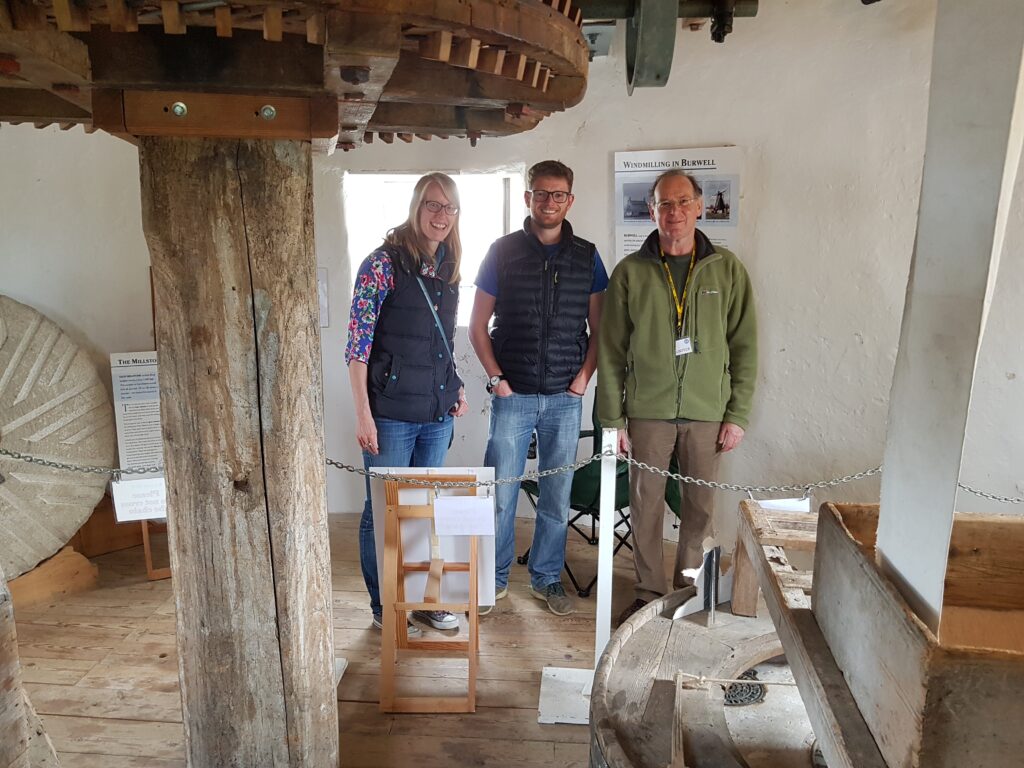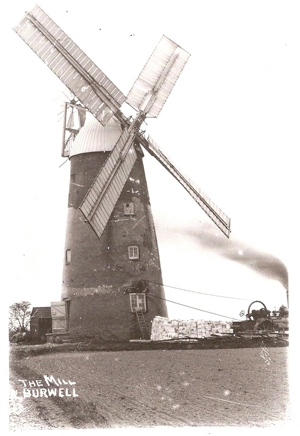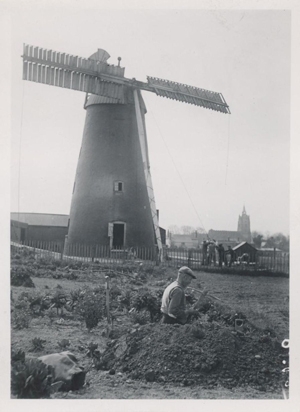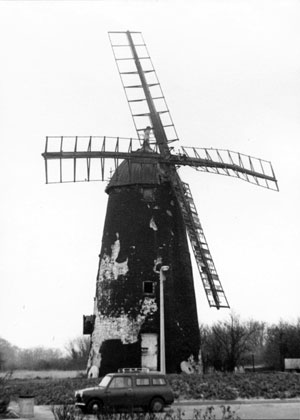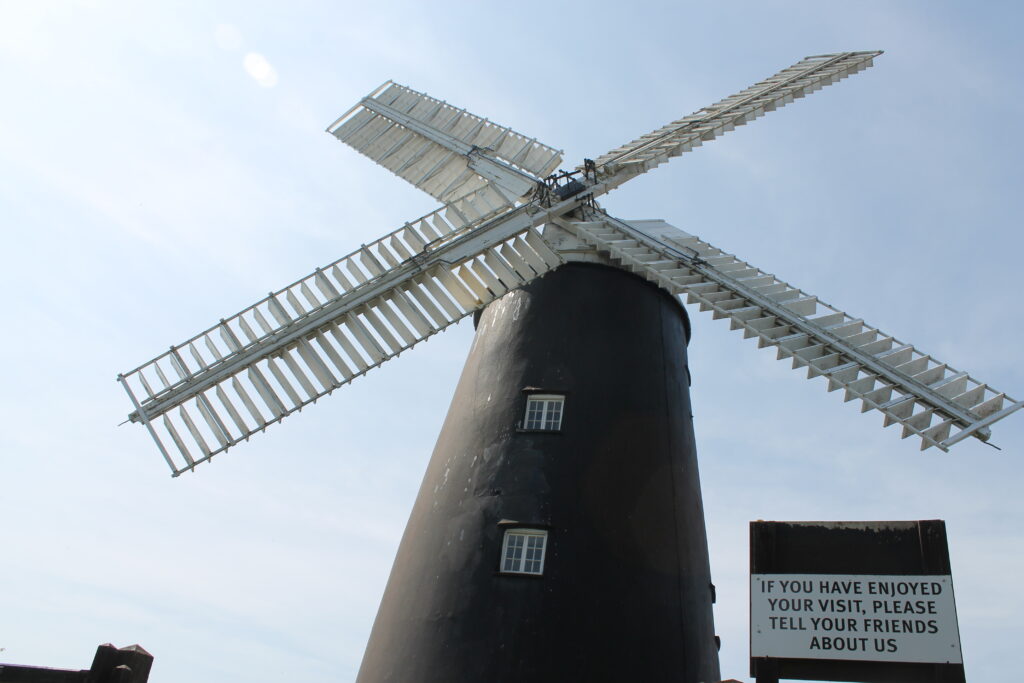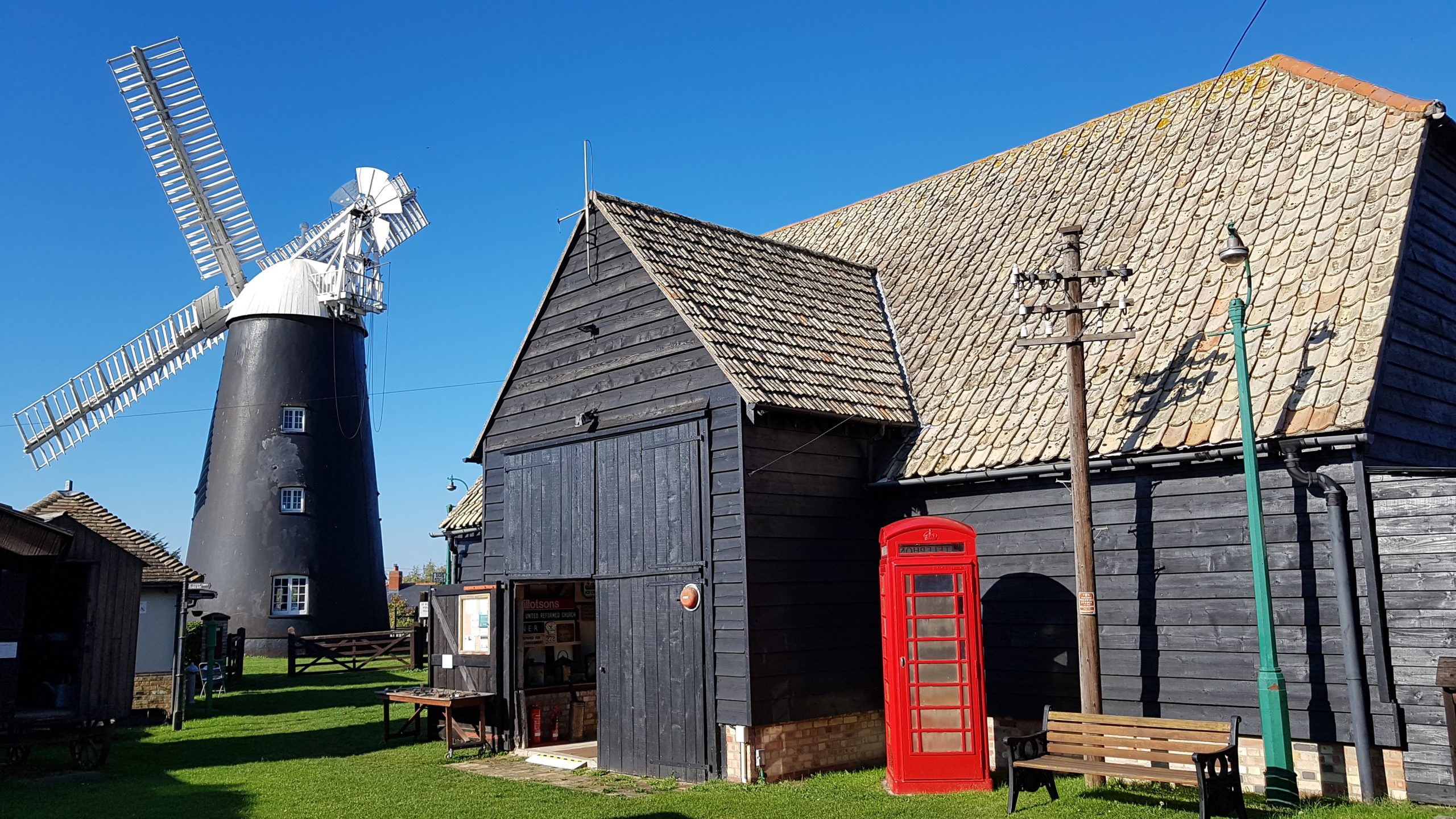
Stevens’ Mill
We aim to open the windmill and run mill tours on every open day (you may have to wait for a timed opening if we are short of volunteers on the day of your visit). You can climb four floors to the top of the mill, learn about milling and windpower, grind flour, follow the trail, and try out the millers' costumes, junior hard hats and tool belts ...
(There is a small additional charge of £2 on top of your museum admission charge, and minimum height restriction of 1.1 metres, for accessing the upper floors of the mill. Further details and tickets in the entrance kiosk by the museum's main gate. Tickets can be purchased at any time during your visit to the museum. There is no additional charge for accessing the ground floor of the mill. Access to the upper floors is only available as part of a guided tour with limited numbers on each tour. Season Ticket holders have free admission)
History of Stevens' Mill
Stevens' Mill is Burwell’s only surviving mill and was built around 1820 for local miller Oliver Carter. For around 100 years the mill ground flour for local farmers and villagers. Flour production ceased during the First World War, and the mill was then used to grind cereals and pulses for animal feed.
In 1862 Stevens’ Mill suffered serious damage in a gale, as reported in the Cambridge Independent Press on 25th October:
BURWELL: This village was visited by a perfect hurricane on Sunday last ... The cap, sails and everything level with the brickwork of the tower-mill, belonging to Mr Oliver Carter was blown off, which is a serious calamity to him, as the damage may be estimated at from £150 to £200.
Fortunately, the money was found to build and install a new cap, fantail and four sails.
In 1884 the mill was bought by its tenant George Mason from North Street, Burwell.
From the 1920s to 1950s it was owned and operated by brothers Alfred and Warren Stevens, becoming known as Stevens’ Mill. The windmill became a listed building in 1951, four years before Warren Stevens retired and milling ceased. Today it is the only Grade II* listed building in the village.
The mill was rescued from dereliction in 1969 by the Burwell Windmill Trust, and granted to Burwell Museum Trust in 1998. During this period two new sails were installed, the cap was rebuilt with an aluminium sheet skin instead of a wooden one, the fantail was rebuilt, a concrete ground floor installed, and internal woodwork repaired. However, serious mechanical failure meant the mill ceased working in the mid-2000s, and in 2010 it was put on English Heritage’s Buildings At Risk register.
In 2013-14, a generous grant from the Heritage Lottery Fund restored the mill. The cap, fantail and mill machinery were repaired, the wooden floors restored, and external render repaired and repainted. Four new sails were built, and 192 sail shutters made by Burwell Museum volunteers. The AmeyCespa Community Fund provided supplementary funds to help with this work.
At Easter 2014, the mill re-opened to the public with new display boards, interactive exhibits, video films and other interpretation. We’d like to thank the Heritage Lottery Fund and all our sponsors for their generous support.
In September 2020 we held a mini music festival to celebrate the mill's bicentenary which included 2 songs written for the occasion.
It was the only event we managed to hold in 2020 due to the Covid 19 pandemic restrictions.
We usually take part in National Mills Open Weekend every May with extra things to do and see in addition to free admission to the museum and windmill.
